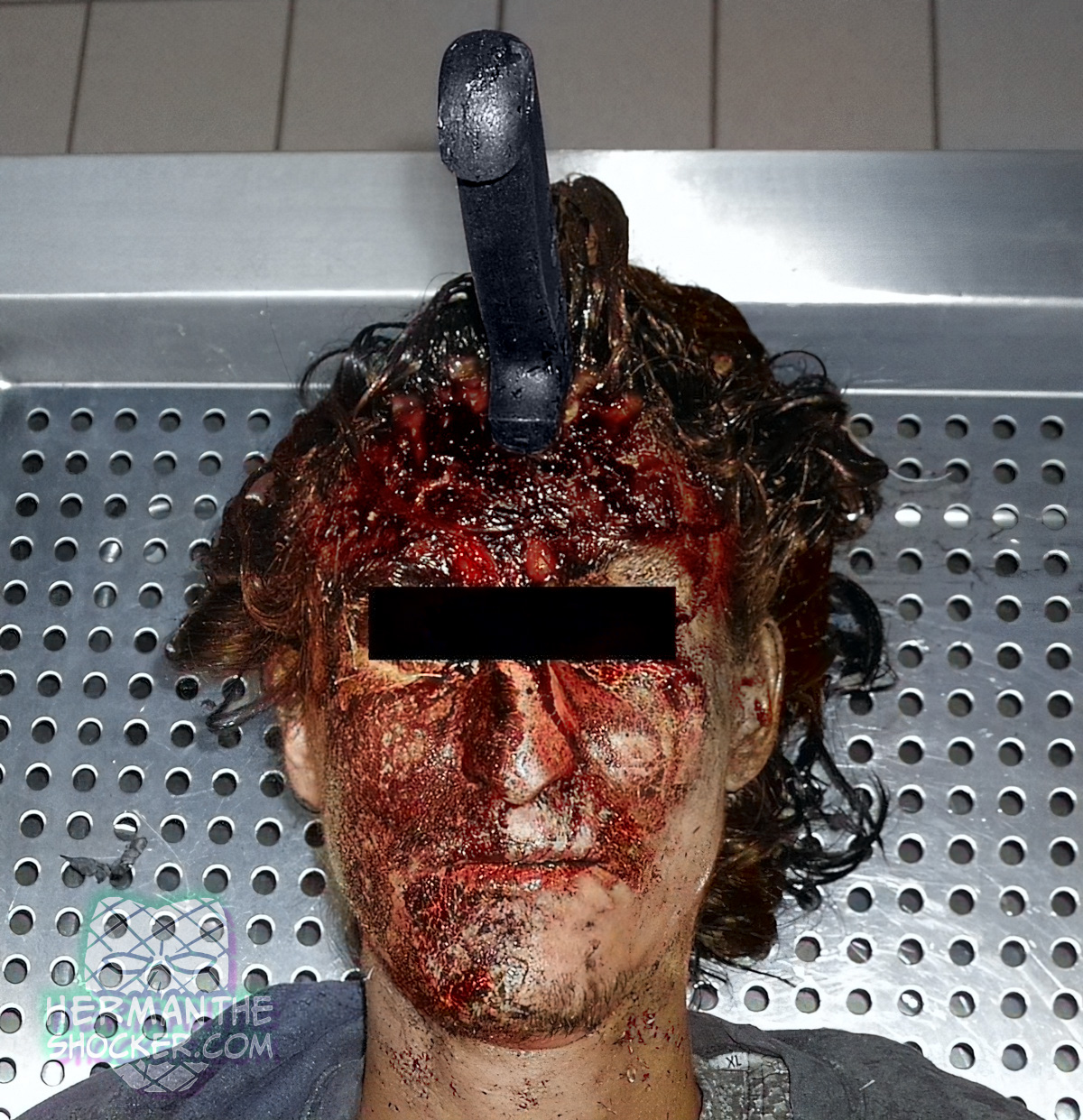France. A 24-year-old man was found dead by his father lying on the ground in his yard, facedown, in a pool of blood. The handle of a knife was protruding from his forehead, firmly embedded in the bone. There was no evidence of forced entry. No notes were found at the scene. An extensive investigation by the local police disclosed the following facts: the man was living with his parents, had no friends, and was unemployed; according to the medical record, he was suffering from schizophrenia and had not received any psychiatric treatment. He had auditory hallucinations and paranoid delusions (he said “I am quartered by Bin Laden”). No prior suicidal attempts were documented. Initially, homicide was suspected by the authorities. A medico-legal autopsy was ordered by the public prosecutor’s department.
Skull x-rays revealed no fractures but showed an intact kitchen knife impacted in the midline of the forehead, and the depth of penetration. External examination showed no blunt lesions. About 40 deep, vertical, incised wounds ran parallel to each other on the forehead near the lethal stab wound. Three superficial incised wounds, 2 cm each, were noted on the right palm. At autopsy, the knife was removed by traction. The skull seemed of normal thickness. The knife had a wooden handle and a 185-mm long and 34-mm wide blade. The depth of the wound track was estimated to be 17 cm.
Cranial autopsy examination revealed the trajectory of the knife blade to run in a left parasagittal plane, past (from ventral to dorsal) the first frontal gyrus (F1) near the lateral ventricle, the cingulum, the genus corporis calosi, the caput nuclei caudate, the thalamus, the tectal cistern, the hemisphere of cerebellum, to eventually reach the internal occipital process.
Police investigation based on medico-legal findings and the circumstances surrounding the death considered that the victim had committed suicide by fatally stabbing himself. Toxicologic samples were made, but no analysis was ordered.
Lethal stab wounds are relatively uncommon because the adult calvarium usually provides an effective barrier, but there are areas of thin bones such as the orbitae or the temporal region where knives may penetrate easily. The force is believed to be about 5x higher in the temporal region and 11x higher in the parietal region than the force needed to perforate the skin. Moreover, the assessment of force needed for penetrating the body is difficult because it is dependent on the sharpness of the weapon and the impact velocity, so even a full-thickness skull will not stop a forcefully thrust sharp object.
Kitchen knives are not very strong and are more suited for the penetration of soft tissue rather than bone. The lack of strength inherent in these weapons, and the bony structures of the head, whose rounded contour acts to deflect the point of the knife, combine to protect the brain. These factors can help to explain the small number of penetrating stab wounds of the brain.
Latest posts













